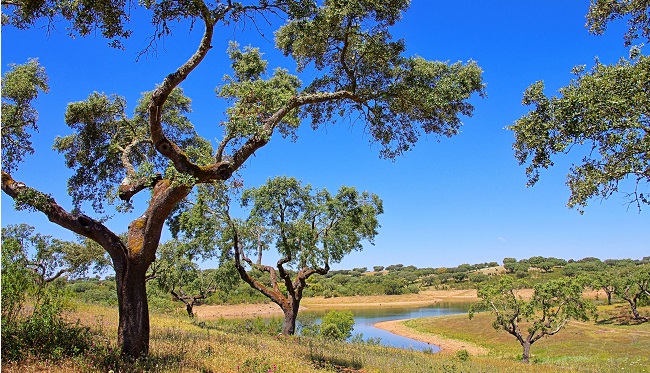
We’ve already passed the carbon dioxide tipping point, and human activity is “extremely likely” to be the cause of climate change, meaning we can brace ourselves for greater famines and natural disasters. But what if we could figure out a cheaper way to remove carbon dioxide from the atmosphere? Enter Dr. Joanne Chory of the Salk Institute for Biological Studies and HHMI, winner of the 2017 Breakthrough Prize in Life Sciences. Her lab is working on a solution that seems almost too simple to be possible.
Her solution hinges on suberin, also known as cork. It’s mostly composed of carbon and can take a few thousand years to break down, meaning it captures carbon from the atmosphere and can keep it out of the carbon cycle for centuries. Most suberin is produced by cork trees (pictured above), but it’s also found in smaller amounts in plant roots. Chory’s team is using cross-breeding to create breeds of common food crops (like chickpeas) which produce much more suberin in their roots.
“If we can help plants make more of it than they usually make, and we put that ability into plants that we’ve already selected that have deeper and bigger roots, we think we can make a plant make 20 times the amount of suberin that it normally makes,” Chory told Popular Mechanics. “We did the numbers, and the numbers say you need about 5% of the world’s farmland growing highly-enriched suberin crops to fix 50% of all the CO2 that we’re putting up there.”
It’s not certain yet if the new crossbreeds will produce as much food per acre, but increasing their carbon sequestration by a factor of 20 seems like a fair trade-off, especially if farmers are allowed to profit from carbon offsets.
Alternatively, we could just pretend nothing is happening…
(Via Popular Mechanics and Duncan Hull)






